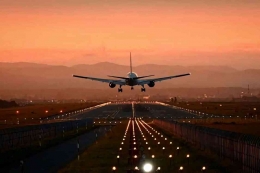How an airplane works: Revealing the mechanism of Airplanes, allowing us to travel long distances quickly and efficiently. Have you ever wondered how these amazing machines can fly in the sky? This explanatory text is intended to shed light on the inner workings of an aircraft and to shed light on the principles of flight.
1. Elevator Basics:
The fundamental principle behind an aircraft's ability to fly is lift. Lift is generated by the aircraft's wings, which are specially designed with a curved shape called an airfoil. As the plane moves through the air, the shape of the wing creates a pressure difference between the upper and lower surfaces of the wing. This pressure difference creates lift, allowing the plane to overcome gravity and stay aloft.
2. Thrust and thrust:
To advance and maintain flight, aircraft depend on thrust and thrust. Most aircraft use jet engines or propellers to generate the necessary thrust. Jet engines work by drawing in air, compressing it, and mixing it with fuel. The resulting combustion produces a high-velocity flue of exhaust gases, which creates forward thrust to propel the aircraft. The propeller, on the other hand, converts the rotation of the engine into forward thrust by pushing the air backwards.
3. Control surface:
The aircraft is equipped with various control surfaces that allow the pilot to control the aircraft. The main control surfaces are the asterisk, the elevator and the rudder. The asterisks, located on the trailing edges of the wings, control the rolling or ramping motion of the aircraft. The elevators, located in the tail section, control the altitude or the up and down movement of the aircraft. The rudder, also in the tail, controls the yaw or horizontal movement of the aircraft.
4. Stability and Control:
To provide stability and control during flight, the aircraft uses a combination of design features and systems. Vertical stability is achieved by placing the center of gravity in front of the wing, while lateral stability is maintained by the dihedral angle of the wing. Control systems, such as hydraulics or fly-by-wire technology, allow the pilot to control the control surfaces and make fine adjustments to maintain stability and control.
5. Navigation and Communication:
Modern aircraft are equipped with sophisticated navigation and communication systems. Navigation systems, including GPS and inertial navigation systems, help determine the position, altitude, and direction of the aircraft. Communication systems, such as radios and transponders, allow pilots to communicate with air traffic controllers and other aircraft, ensuring a safe and efficient journey.
Understanding how an airplane works reveals the wonders of flight. Lift, propulsion, control surfaces, stability mechanisms and advanced navigation systems work in harmony to make air travel possible. Continuous advancements in aviation technology continue to improve safety, efficiency and comfort, leading us to a future where air travel remains an essential part of our lives. And also, we have to appreciate the flights nowadays for their dedication to the air transportation for us.
Follow Instagram @kompasianacom juga Tiktok @kompasiana biar nggak ketinggalan event seru komunitas dan tips dapat cuan dari Kompasiana. Baca juga cerita inspiratif langsung dari smartphone kamu dengan bergabung di WhatsApp Channel Kompasiana di SINI







